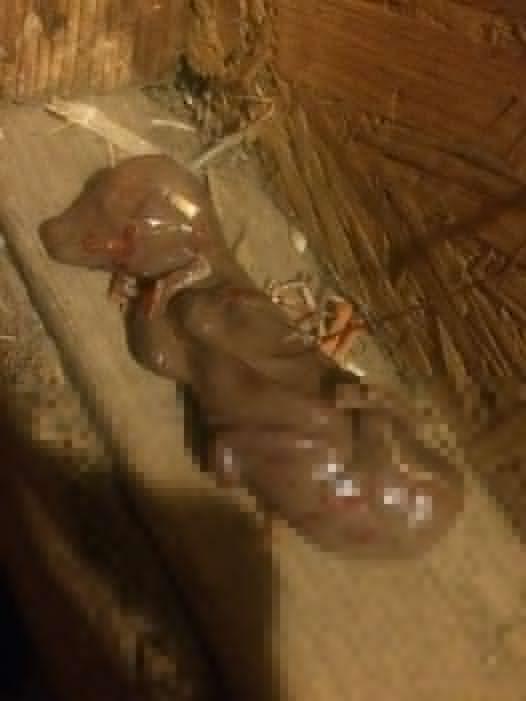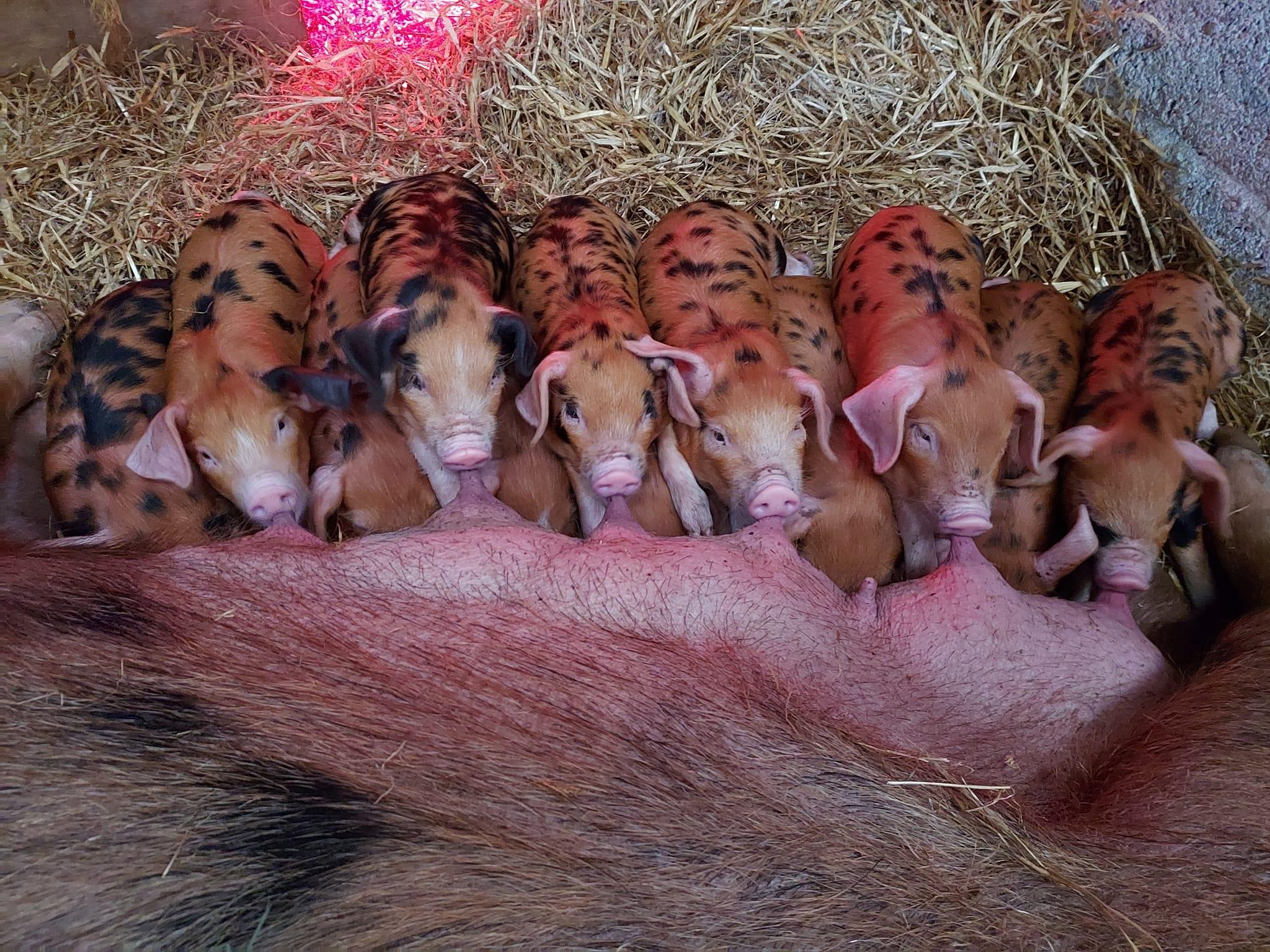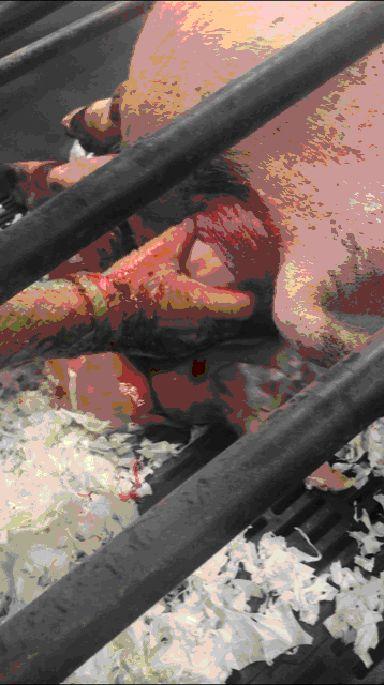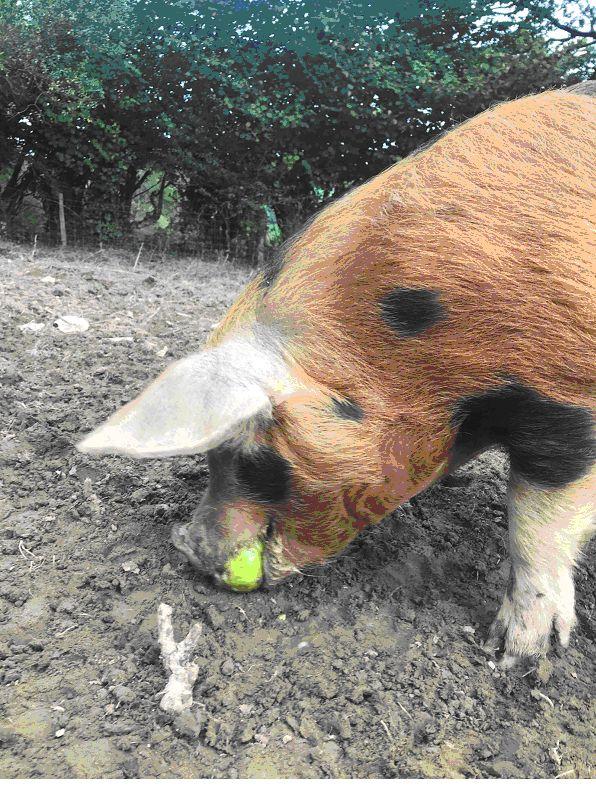
2 minute read
Vet Chat
Louise Blenkhorn
Louise Blenkhorn, BSc(Hons), BVM&S, MRCVS, is an independent pig veterinary consultant and a pig farmers daughter. Louise's private life is just as busy. Amother of two to Emma andAva. Louise and her husband Neil, run a successful herd of Limousin beef cattle.
Advertisement

Farrowing - when to intervene
So, farrowing season is upon us.
I would like to run you through the farrowing process – we need to know what is normal so we know when to intervene.
The piglets are responsible for their birth date by secreting corticosteroids – in response to reducing nutrient availability - stimulating the placenta/uterus to produce the hormone prostaglandin.This directly causes the piglets to cease secreting the pregnancy maintenance hormone progesterone, initiating the birthing process.
If milk is abundant and easily flows when the teats are gently squeezed, then the sow is probably within six hours of farrowing. Restlessness and nest-building are signs that the birth will be in the 8 - 24 hours.
Intermittent abdominal muscle straining occurs before the birth of the first piglet, usually accompanied by shivering, with the sow drawing her upper hind leg upwards.The interval between piglets should gradually reduce as suckling will stimulate oxytocin release which will in turn strength uterine contractions.The average interval between piglets is 18-20 mins in sows and 12 mins in gilts.The average duration of farrowing is 2.5hrs in sows and 1.5hrs in gilts.
Reasons for failing to deliver piglets
• Dead or mummified piglets
• Very large piglets and small pelvis
• Abnormal presentation of the piglets
• >1 piglet being presented at the same time
• Rotation of the womb
• Sow illness
• Failure of the womb to contract (uterine inertia)
• Stress of the sow (nervous/ disturbed)
• Over fat sows or those with very large litters

When to intervene
● Interval >45 minutes between piglets

● Sow is showing signs of distress (contractions with no piglet, panting, blood from vulva)
● Meconium in the vulval discharge (green brown in colour and indicates piglet is in distress)


● Failure of delivery of placenta within 1 hour
● The degree of dryness of the piglets can be used to estimate time since last piglet delivered – but ideally count and record time
Farrowing assistance
● Wash your hands/arms and the sows vulval lips with soap and water and rinse well
● Wear a full arm-length glove
● Liberally use sterile lubricant
● Compress hand to a point and slowly insert in an upwards direction at an angle of 45 degrees until a piglet is felt.
● Grasp piglet by the legs or place finger in the piglet’s mouth supporting the lower jaw with your thumb. If possible, grasp the piglets head with your whole hand.

● Slowly withdraw the piglet.
And lastly – but most importantly - Key factors in piglet survival

● Birth weight
● Body temperature drop after birth
● COLOSTRUM INTAKE impact produce, so low miles was important to us and although they did feed our family, along the way these two spotty ginger bundles of energy gave us so many funny tales and adventures that we hadn’t really expected.
The one memory that I will never forget was when we were feeding our pigs apples straight from the orchard and one started drooling a lot and then coughing. It appeared that a small apple had got itself stuck in his throat. So being new to keeping pigs and having no idea of what to do in the situation,Alastair jumped in their pen and did as you would to anyone else choking, he tried giving the pig the Heimlich manoeuvre.As I watched him struggling away, as if he was trying to hug a pig that hated him, and riding it in a strange way, the panic disappeared and hilarity kicked in. It was the funniest thing to watch and thankfully it worked.As the autumn brought apples in abundance it also brought the end to our first OSB pig adventures. It was always important to us that our animals had a stress free, and happy life and we wanted to ensure the end was as stress free as it could be too.





